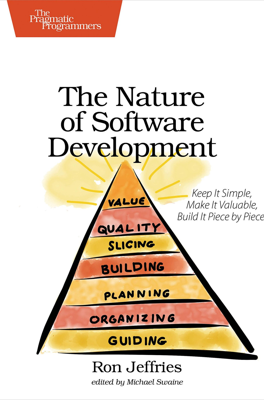Agile Methods
Author's Background: The author shares insights from his deep experience in software development, including his contribution to the Agile Manifesto. His approach, termed “Natural Way,” is not intended as a new Agile method but is a refined vision based on his extensive career spanning various phases of Agile development.
Agile Framework Diversity: Numerous Agile frameworks are noted, each with unique focuses and structures. Scrum is highlighted for its broad applicability beyond software, lacking explicit technical practices such as test-driven development and refactoring. Extreme Programming (XP), in contrast, incorporates these practices alongside a structure similar to Scrum but without the specific ScrumMaster role, recommending a more flexible coaching role.
Lesser-Known Frameworks: Other frameworks like Crystal Clear, Dynamic Systems Development Method (DSDM), Large Scale Scrum (LeSS), Disciplined Agile Development (DAD), and Scaled Agile Framework (SAFe) are mentioned, each offering different complexities and scales of application.
Framework Use Advice: - Flexibility Over Rigidity: Emphasizes using Agile frameworks as loose guidelines rather than strict rules, advocating for minimal framework use ("too little rather than too much"). - Continuous Adaptation: Suggests treating Agile processes as adaptable tools, tailored through experimentation and responsive adjustments based on real-time learning and team feedback. - Decentralized Control: Advises keeping process alterations close to the team to avoid unnecessary directives that could hinder team autonomy and innovation. - Emphasis on Learning: Highlights the necessity of continuous learning and skill development at all project levels to enhance effectiveness and ensure the delivery of quality software.
Strategic Project Control: - Control through observation of tangible outputs like running software, verified by business-defined tests, and managing based on observable results and pace, rather than rigid adherence to preset frameworks.
Cultural and Cognitive Shifts: - Supports a thinking, learning culture over a controlling, command-based environment. Success is seen not just in planning but in the dynamic interaction and decision-making that happens in real-time, likened to how teams adapt in sports.
The distilled essence of this chapter is to leverage Agile principles flexibly and thoughtfully, allowing room for adaptation and growth based on actual project needs and team dynamics. This approach prioritizes practical results and continuous learning over strict procedural adherence, aligning with an overarching vision that values responsiveness and efficiency in software development.
